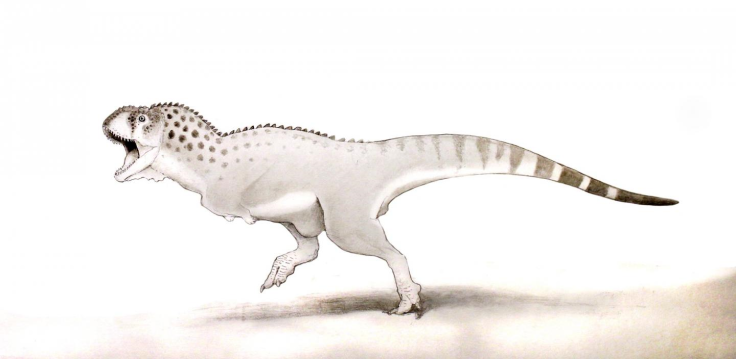Remains Of One Of The Last African Dinosaurs Found In Moroccan Phosphate Mine

When the ancient supercontinent of Gondwana broke up in the early Cretaceous period about 140 million years ago, the dinosaur species that evolved on the African continent became a distinct fauna. Paleontologists have discovered one of the last African dinosaur species, whose fossil was found in a phosphate mine in Morocco.
Named Chenanisaurus barbaricus, the species was among the last dinosaurs on Earth and disappeared in the mass extinction event 66 million years ago that wiped out dinosaurs from the planet. It was a contemporary, although smaller, of the famous Tyrannosaurs rex that lived in North America and Asia around the same time.
The fossil was a fragment of a jaw bone found in the phosphate mines at Sidi Chennane in the Oulad Abdoun Basin, Morocco, which are remains of an ancient seabed that is rich in fossils trapped in marine rocks. And analysis of the fossil revealed the distinct nature of the dinosaur fauna in Africa.
Read: Study Questions Dinosaur Family Tree
Like the T. rex, C. barbaricus was a predator, as suggested by the worn teeth of the fossil. However, unlike its bigger feathered relative, it was a scaly species. It stood on two legs and had short arms like stumps, with tiny hands. Compared to the T. rex, it had a smaller brain, and a shorter, deeper face. The researchers identified it as belonging to a group of dinosaurs known as abelisaurs.
In a paper published Wednesday in the journal Cretaceous Research, paleontologists described the newly discovered abelisaur. The group was the dominant predator in Africa, Europe, India and South America at the end of the Cretaceous period.
Nick Longrich from the University of Bath in the United Kingdom, and lead author of the study, said in a statement: “This find was unusual because it’s a dinosaur from marine rocks — it’s a bit like hunting for fossil whales, and finding a fossil lion. It’s an incredibly rare find — almost like winning the lottery. But the phosphate mines are so rich, it’s like buying a million lottery tickets, so we actually have a chance to find rare dinosaurs like this one.”
C. barbaricus was one of the largest abelisaurids, and together with other characteristics of the species, supports the “hypothesis that the fragmentation of Gondwana led to the evolution of endemic dinosaur faunas during the Late Cretaceous,” according to the study.
Read: Dinosaurs Were Gentle Lovers, Engaged In Foreplay
Longrich explained the significance of the find: “We have virtually no dinosaur fossils from this time period in Morocco — it may even be the first dinosaur named from the end-Cretaceous in Africa. It’s also one of the last dinosaurs in Africa before the mass extinction that wiped out the dinosaurs. It’s an exciting find because it shows just how different the fauna was in the Southern hemisphere at this time.”
The international team behind the study, titled “An abelisaurid from the latest Cretaceous (late Maastrichtian) of Morocco, North Africa,” included researchers from Morocco, France and Spain.
© Copyright IBTimes 2024. All rights reserved.











